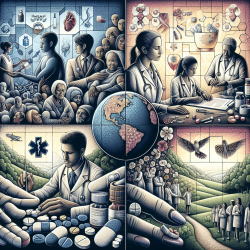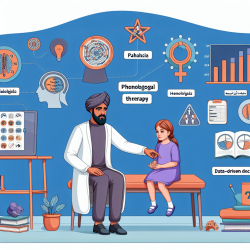Introduction: A Call for Global Action
In the realm of global health, untreated pain remains a silent epidemic, affecting millions worldwide. The research article "Untreated Pain, Narcotics Regulation, and Global Health Ideologies" by Nicholas B. King and Veronique Fraser highlights the urgent need to address this issue. As practitioners, we hold the power to instigate change and alleviate suffering by embracing comprehensive pain management strategies. This blog explores the outcomes of the research and encourages further exploration into this pressing global health challenge.
The Global Burden of Untreated Pain
Untreated pain is a pervasive issue that transcends borders, disproportionately affecting vulnerable populations such as the poor, elderly, mentally ill, children, women, and racial/ethnic minorities. The World Health Organization (WHO) estimates that millions of patients with terminal illnesses, such as HIV/AIDS and cancer, suffer from moderate to severe pain without access to adequate treatment. This lack of pain management not only diminishes quality of life but also leads to severe physical, psychological, social, and economic consequences.
Implementing Multimodal Pain Management
To effectively combat the global crisis of untreated pain, practitioners must adopt a multimodal approach to pain management. This involves integrating pharmaceutical and non-pharmacological therapies to address the complex nature of pain. While opioids remain a cornerstone for treating acute pain, they are not a panacea. A comprehensive strategy should include:
- Pharmacological management tailored to individual needs
- Rehabilitation and physiotherapy
- Psychosocial support and counseling
- Education and training for healthcare professionals
Addressing Regulatory Barriers
International narcotics regulation poses significant challenges to accessing effective pain management. The emphasis on prohibition and law enforcement often overshadows the need for medical access to opioids. Reforming these regulations is crucial, but it must be accompanied by efforts to educate healthcare providers and implement monitoring systems to prevent misuse and diversion.
The Role of Practitioners in Driving Change
As practitioners, we have a pivotal role in advocating for pain management as a global health priority. By staying informed through research, conferences, and networking, we can influence policy changes and promote awareness. Encouraging interdisciplinary collaboration and engaging with global health organizations can amplify our efforts to address untreated pain effectively.
Conclusion: A Path Forward
The journey to alleviate untreated pain requires a collective commitment to prioritize pain management in global health agendas. By implementing the outcomes of the research presented by King and Fraser, practitioners can lead the charge in transforming pain management practices worldwide. Let us embrace this opportunity to make a meaningful impact on the lives of those suffering from untreated pain.
To read the original research paper, please follow this link: Untreated Pain, Narcotics Regulation, and Global Health Ideologies.










